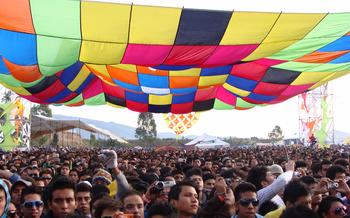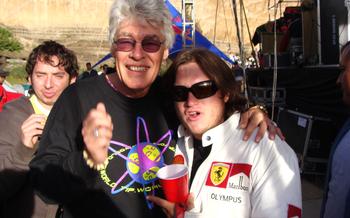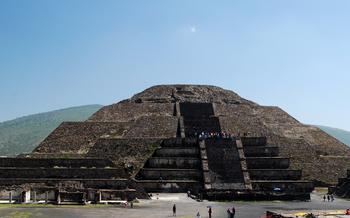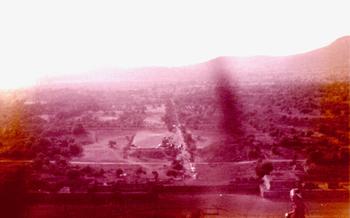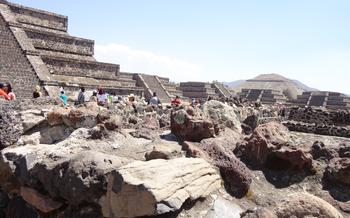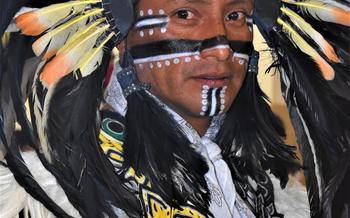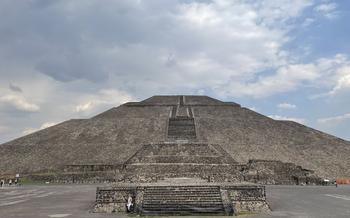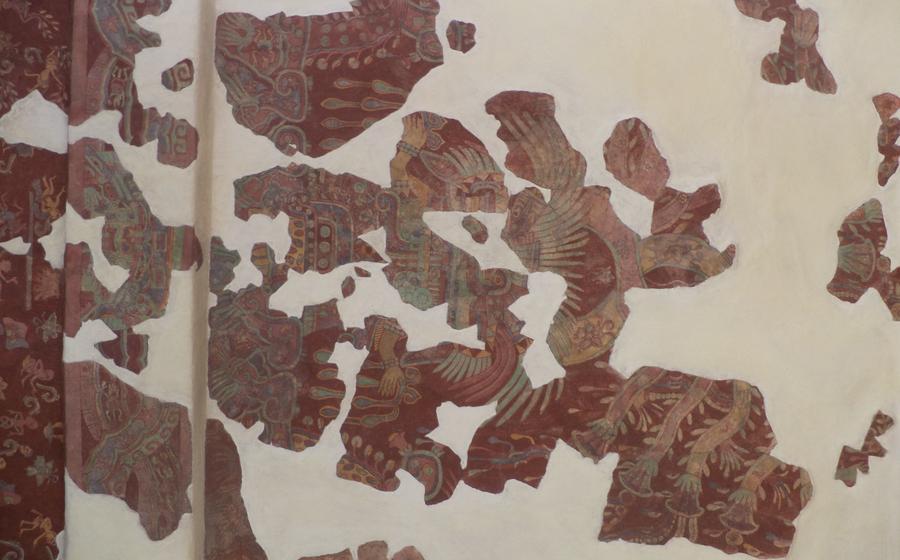
Palacio de Tepantitla
- Guided Tours
- Self-Guided Exploration
- History and Origins
- Architectural Features
- Iconography and Murals
- Connection to Teotihuacan Society
- Myths and Legends
- Excavation and Restoration
- Visiting Tips
- Nearby Attractions
- Photography Opportunities
- Cultural Significance
- Insider Tip: Unveiling the Secrets of the Palacio de Tepantitla
Guided Tours
Visiting the Palacio de Tepantitla with a knowledgeable guide offers a deeper understanding and appreciation of this ancient masterpiece. Guided tours provide insights into the history, significance, and symbolism of the palace, as well as the broader context of Teotihuacan civilization.
There are several tour options available, ranging from small group tours to private guided experiences. Small group tours are a great way to learn from an expert while meeting fellow travelers, while private tours offer a more personalized and in-depth experience.
To book a tour, you can either contact a local tour operator or make reservations online. Costs vary depending on the type of tour, group size, and the duration of the visit.
When choosing a tour guide, look for someone who is passionate, knowledgeable, and experienced. A good guide will not only provide factual information but also share stories and anecdotes that bring the palace to life.
Whether you choose to join a guided tour or explore the palace independently, be sure to come prepared with comfortable shoes, a camera, and a sense of wonder. The Palacio de Tepantitla is a place where history, art, and spirituality intertwine, offering a glimpse into the rich cultural heritage of ancient Mexico.
Self-Guided Exploration
Exploring the Palacio de Tepantitla independently offers a unique and rewarding experience. The freedom to set your own pace, choose your route, and delve into the details at your leisure allows for a deeper connection with the site.
Information Resources and Maps: Before embarking on your self-guided tour, gather necessary information and resources. The Teotihuacan Visitor Center provides maps, guidebooks, and brochures that offer insights into the palace's history and layout. Utilize these resources to plan your route and identify areas of particular interest.
Suggested Routes and Highlights: Start your exploration by visiting the main courtyard, where you can admire the intricate murals depicting mythological scenes and deities. From there, explore the various rooms and chambers, each with its unique features and iconography. Don't miss the Sala de los Jaguares, renowned for its stunning jaguar murals, and the Sala de las Columnas, with its impressive columns and carved reliefs.
Tips for Making the Most of a Self-Guided Visit: To make the most of your self-guided exploration, consider the following tips:
-
Research in Advance: Familiarize yourself with the palace's history, significance, and key features before your visit. This knowledge will enhance your understanding and appreciation of the site.
-
Allow Ample Time: Allocate sufficient time to explore the palace thoroughly. Rushing through the site will prevent you from fully absorbing its grandeur and details.
-
Observe and Reflect: Take your time to observe the murals, carvings, and architectural elements closely. Reflect on their symbolism and the stories they convey.
-
Capture the Beauty: Bring a camera to capture the stunning visuals of the palace. However, be mindful of lighting conditions and avoid using flash photography, which can damage the murals.
History and Origins
The earliest evidence of occupation at the site of the Palacio de Tepantitla dates back to the Early Classic period of Teotihuacan, around the 1st century AD. During this time, the area was likely used for agricultural purposes, with simple dwellings and storage facilities constructed in the vicinity.
The construction of the palace itself began in the Middle Classic period, around the 4th century AD. This was a time of great prosperity and expansion for Teotihuacan, and the palace was built as a residence for the city's elite. The palace underwent several phases of construction and expansion over the following centuries, eventually reaching its final form in the 7th century AD.
The purpose and function of the palace are still debated among scholars. Some believe that it was primarily used for religious ceremonies and rituals, while others suggest that it also served as an administrative and political center. There is evidence to support both of these theories, and it is likely that the palace served multiple functions throughout its history.
Archaeological excavations at the site have uncovered a wealth of artifacts and information, shedding light on the history and significance of the Palacio de Tepantitla. Ongoing research continues to unravel the mysteries of this ancient palace and its role in Teotihuacan society.
Architectural Features
The Palacio de Tepantitla showcases a unique layout and design that sets it apart from other Teotihuacan structures. The complex consists of several interconnected courtyards, platforms, and staircases, creating a labyrinthine arrangement that invites exploration.
The use of different building materials and techniques adds to the architectural interest of the palace. While most Teotihuacan structures were constructed using adobe bricks, the Palacio de Tepantitla incorporates stone, stucco, and wood, demonstrating the advanced construction skills of the Teotihuacanos.
Notable architectural elements within the palace include the main courtyard, which features a large central platform flanked by smaller platforms and staircases. The murals that adorn the walls of the courtyard depict scenes of ritual activities and mythological figures.
Another striking feature is the so-called "Temple of the Shells," a small structure located within the palace complex. The temple is adorned with thousands of seashells, arranged in intricate patterns and designs, creating a visually stunning display.
The Palacio de Tepantitla's unique architectural features, combined with its well-preserved murals, make it a must-see attraction for anyone interested in Teotihuacan culture and architecture.
Iconography and Murals
The Palacio de Tepantitla is renowned for its extensive and well-preserved murals, which adorn the walls of its various rooms and courtyards. These murals are considered masterpieces of Teotihuacan art and provide valuable insights into the beliefs, rituals, and daily life of the ancient Teotihuacanos.
The iconography depicted in the murals is complex and diverse, featuring a wide range of motifs, including gods, animals, plants, and geometric designs. Many of the murals depict religious ceremonies and rituals, offering a glimpse into the spiritual practices of the Teotihuacanos. Other murals depict scenes of everyday life, such as hunting, farming, and feasting, providing a window into the daily activities of the ancient city's inhabitants.
The murals were created using a variety of techniques, including fresco, tempera, and secco. The artists used vibrant colors and bold lines to create vivid and dynamic compositions. The murals are remarkably well-preserved, considering their age, and have been the subject of extensive study and conservation efforts.
The iconography and murals of the Palacio de Tepantitla are of great cultural and historical significance. They provide a unique glimpse into the art, beliefs, and daily life of the ancient Teotihuacanos and are a testament to the skill and creativity of their artists.
Connection to Teotihuacan Society
The Palacio de Tepantitla held a significant role in the religious, administrative, and political life of ancient Teotihuacan. It served as a ceremonial and ritual center, where religious ceremonies and rituals took place. The murals within the palace depict various religious scenes and symbols, suggesting its importance in the religious sphere.
Additionally, the palace likely served administrative and political purposes. It may have been the residence of elite officials or rulers, who used it to conduct government affairs and make important decisions. Evidence of elite residences and workshops within the complex supports this theory.
The palace's location within the city, close to other important structures such as the Pyramid of the Sun and the Pyramid of the Moon, further suggests its central role in Teotihuacan society. It was likely a place where the city's elite gathered for important events and ceremonies, and where decisions were made that affected the entire community.
Myths and Legends
The Palacio de Tepantitla is shrouded in an aura of mystery, giving rise to numerous myths and legends among the local population. One captivating tale recounts the construction of the palace under the guidance of a powerful sorcerer who commanded a legion of spirits to complete the task in a single night. Another legend speaks of a hidden chamber concealed within the palace, believed to contain vast treasures and guarded by a fierce serpent. These stories, passed down through generations, add an enchanting layer to the palace's allure, captivating visitors with their blend of history and imagination.
Excavation and Restoration
Archaeological excavations at the Palacio de Tepantitla began in the early 20th century, led by renowned Mexican archaeologist Leopoldo Batres. These excavations revealed the intricate murals and architectural features that had been hidden for centuries. However, the process was not without its challenges as the site was overgrown with vegetation and buried under layers of soil.
Overcoming these obstacles, Batres and his team meticulously uncovered the palace, unearthing its secrets. Their work laid the foundation for subsequent excavations and restoration efforts. In recent years, advanced techniques and technologies have been employed to restore and preserve the palace complex.
Conservationists have focused on stabilizing the structures, repairing damaged murals, and implementing measures to protect the site from environmental factors. This ongoing work ensures that future generations can continue to appreciate the splendor of the Palacio de Tepantitla.
Visiting Tips
Timing: Aim for early morning or late afternoon visits to avoid the midday heat and crowds. The golden hour lighting, around sunrise and sunset, offers stunning photo opportunities and a magical ambiance. Attire: Dress comfortably and appropriately for exploring uneven surfaces and climbing stairs. Sturdy, closed-toe shoes are recommended for navigating the site safely. Facilities: Restrooms are available near the entrance of the archaeological zone. There are no restaurants or food stalls within the palace itself, so bring snacks and water, especially if you plan on spending a few hours exploring. Safety: The site is generally safe, but it's advisable to stay on designated paths and avoid climbing on structures. Be aware of your surroundings and keep an eye on your belongings. Respect: Remember to be respectful of the site's cultural and historical significance. Avoid touching or damaging the murals and artifacts, and refrain from making excessive noise that may disturb other visitors.
Nearby Attractions
Beyond the captivating confines of the Palacio de Tepantitla, Teotihuacan offers a wealth of other captivating landmarks within easy reach. The majestic Pyramid of the Sun and Pyramid of the Moon stand as testaments to the grandeur of ancient Teotihuacan architecture, inviting you to marvel at their imposing presence and explore their enigmatic depths.
For a glimpse into the daily lives of the Teotihuacanos, venture to the Teotihuacan Market, where vibrant stalls showcase a kaleidoscope of traditional crafts, textiles, and culinary delights. Immerse yourself in the lively atmosphere as you barter for souvenirs and savor authentic Mexican flavors.
If time permits, embark on a day trip to the enchanting Puebla, a colonial city adorned with colorful buildings, intricate tilework, and delicious regional cuisine. Wander through its cobblestone streets, visit the magnificent Cathedral of Puebla, and indulge in the city's vibrant culinary scene.
To make the most of your Teotihuacan experience, consider crafting an itinerary that harmoniously blends the exploration of the Palacio de Tepantitla with visits to these neighboring attractions. Whether you choose to wander independently or join an organized tour, the tapestry of experiences that awaits in Teotihuacan promises to captivate and inspire.
Photography Opportunities
The Palacio de Tepantitla offers a treasure trove of photographic opportunities, with its well-preserved murals, intricate architecture, and picturesque surroundings. To capture the best shots, arrive early in the morning or late in the afternoon to take advantage of the soft, golden light. Equip yourself with a wide-angle lens to capture the expansive murals and a telephoto lens to zoom in on intricate details. Experiment with different angles and perspectives to create dynamic compositions. Remember to respect the sanctity of the site and avoid using flash photography, which can damage the delicate murals. Share your stunning captures online, but be mindful of copyright laws and always credit the Palacio de Tepantitla as the source of your images.
Cultural Significance
The Palacio de Tepantitla holds immense cultural significance as a testament to the ingenuity and artistry of the ancient Teotihuacans. Its murals and iconography offer a glimpse into their beliefs, rituals, and way of life. Scholars have meticulously studied the symbolism embedded within these artworks, uncovering connections to Mesoamerican mythology and cosmology. The palace's influence extends beyond Teotihuacan, as it served as a model for later Mesoamerican societies, such as the Aztecs and Mayans. By studying the Palacio de Tepantitla, we gain insights into the cultural and artistic legacy of one of the most influential civilizations in Mesoamerican history. Ongoing research continues to unravel the mysteries of Teotihuacan, shedding light on the cultural significance of this remarkable site. Every discovery brings us closer to understanding the minds and hearts of this ancient civilization, allowing us to appreciate their enduring impact on the cultural tapestry of Mexico.
Insider Tip: Unveiling the Secrets of the Palacio de Tepantitla
Beyond the well-trodden paths of the Palacio de Tepantitla, there lies a hidden realm waiting to be discovered. One secret spot worth seeking out is a secluded courtyard tucked away behind the main structures. This tranquil oasis offers a moment of respite from the crowds and an opportunity to connect with the palace's ancient energy. As you stand in the center of this hidden courtyard, let your imagination transport you back in time, envisioning the Teotihuacanos who once gathered here for ceremonies or quiet contemplation.
Another hidden gem can be found within the palace's intricate murals. Take your time to study these masterpieces closely, and you may notice subtle details that reveal the humor and creativity of the ancient artists. For instance, in one mural, a mischievous monkey seems to be playing tricks on a solemn-looking figure, adding a touch of whimsy to the otherwise serious artwork. Discovering these hidden elements enhances the appreciation of the palace's artistic legacy and provides a glimpse into the minds of its creators.
Whether you seek solace in secluded corners or delight in uncovering hidden details, the Palacio de Tepantitla offers a unique and immersive experience for those willing to venture beyond the surface. Embrace the opportunity to explore its secrets and gain a deeper understanding of this remarkable ancient city.
